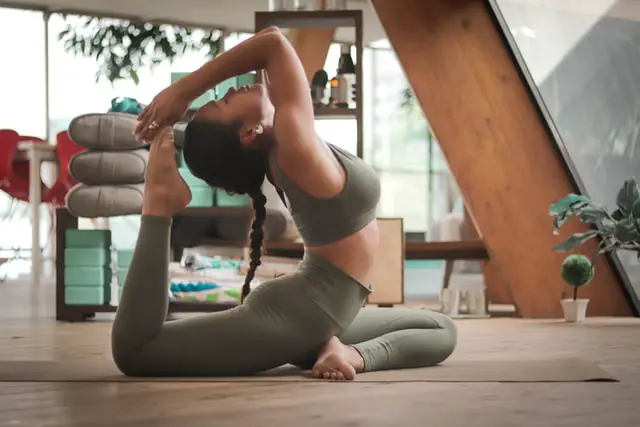The optimal time to practice yoga is at any time that is convenient for a person. People must develop a regimen that fits their lifestyle and accommodates their schedule for the best time to do yoga because regular practice over time is the key to reaping all of yoga’s many advantages.
Finding a sustainable habit is more important than doing yoga at different times and on separate days of the week. Instead of attempting to fit yoga around the schedule, let it work into the calendar to get all its benefits.
No matter what time one chooses as the best time to do yoga, regularity is what offers the most benefits.
Yoga in Morning
Some yoga lineages, including the Pattabhi Jois’ Ashtanga style, advise practicing yoga asanas as early as possible before the sun rises. Most classes occur at this time, and many Ashtanga home practitioners follow this schedule.
Yoga in the morning can boost energy and clarity and establish a positive attitude. It can be simpler to maintain a regular morning practice since many individuals have morning routines that are more controlled or predictable.
Mornings are best for energetic practices to keep people up and energized. Try energizing backbends like wheel position (urdhva dhanurasana), handstand in vinyasa flow (Adho Mukha vrksasana), or inversions like headstand (sirsasana) or courses that include rounds of sun salutations (Surya Namaskar).
Yoga in Afternoon
You can have the best of both worlds by doing yoga in the afternoon. It’s a good time for a demanding, rigorous practice if this is the period when people feel more energetic.
Yoga in the late afternoon before supper might help unwind after a hectic morning and stimulate the appetite for dinner. Be sure to wait at least two to three hours after eating to practice between meals.
Additionally, the muscles might be more warmed during the day than in the morning, when people might feel stiffer. When the muscles are less tense, people may be able to focus a little more on increasing their flexibility.
Yoga in Evening
An evening yoga program can help unwind by reducing stress and encouraging relaxation. Therefore, practicing yoga in the evening can be a calming bedtime routine that aids in getting ready for sleep. It makes one feel refreshed and tranquil in the evening by removing the fatigue from the day’s exertions.
To release tension and obtain a good night’s sleep, try calming postures like the standing wide-legged forward fold (prasarita padottanasana), the goddess pose (supta buddha konasana), the garland pose (malasana), the happy baby pose (ananda balasana), or the seated spinal twist (Ardha matsyendrasana).
The Best Time for Yoga
Each person has a different view on the best time to do yoga. Finding a time that works for you is of utmost importance. It’s beneficial to pick a time when one can concentrate on themself while practicing yoga at home without distractions.
Most yoga studios offer courses all day long, ranging from early morning programs for early risers, brief lunchtime flows, and evening classes for the post-work crowd at 6:00 p.m. Online yoga courses are also available, allowing one to fit it into their schedule whenever it suits them.
See how various yoga sessions feel at different times of the day to identify the perfect yoga time. Conclusion
If anyone is trying to start practicing yoga at home, choosing the proper time of day is crucial. For those who work standard business hours, the evening or the morning is frequently the most convenient. A morning ritual might assist in easing the day and getting off to a good start. An evening practice can relieve stress and make people feel more relaxed. One might discover that they have more energy in the mornings. One might feel more flexible in the evenings, but it will eventually come down to personal preference.




